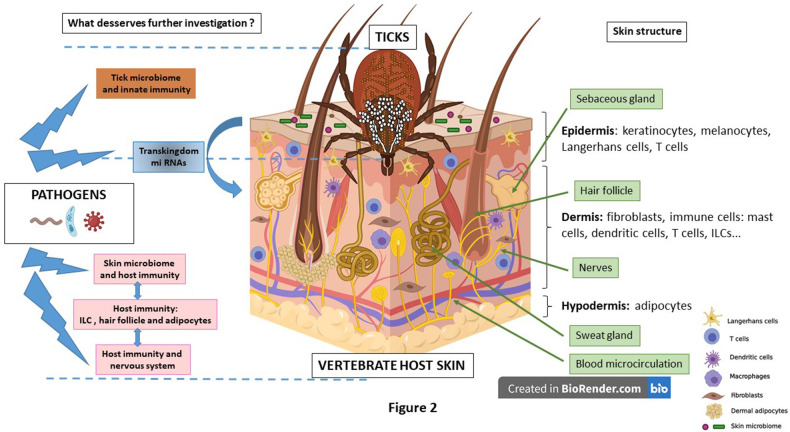Figure 2.
The skin is structured into three interconnected layers. The epidermis, the uppermost layer, mainly composed of keratinocytes accompanied by immune cells such as Langerhans cells and T cells. On its surface, the skin microbiome (bacteria, yeasts and virus) plays a key role in skin homeostasis. The dermis is responsible for resistance and elasticity of the skin. Dermal resident cells are fibroblasts secreting extracellular matrix with numerous immune cells such as dendritic cells, T cells, mast cells, Innate Lymphoid cells (ILCs) and others. Different appendages are present: hair follicles surrounded by dermal adipocytes, sweat glands, microcirculation blood vessels, nerves and sebaceous glands. Then beneath the dermis is the hypodermis that contains numerous adipocytes. During the process of an ixodid, hard tick bite, a feeding pool develops around the tick mouthparts. Saliva is introduced into the bite site and modulates the local host immune response with the goal of avoiding tick rejection. The tick microbiome can be secreted into the skin as exosomes. Likely, transkingdom miRNAs participate in the regulation of the infection. The role of skin immunity and skin and tick microbiomes deserves to be better investigated during the process of pathogen inoculation, multiplication and persistence. Some immune privileged sites like the hair follicle and the adipocytes might help pathogens to better survive within the skin. Recently, the potential role of nerves in the skin immune regulation has been evoked. Created with BioRender.com.

